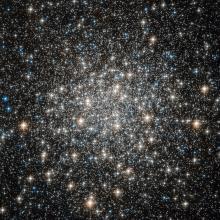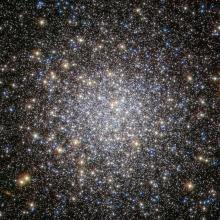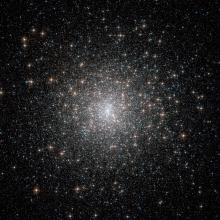Listen to today's episode of StarDate on the web the same day it airs in high-quality streaming audio without any extra ads or announcements. Choose a $8 one-month pass, or listen every day for a year for just $30.
You are here
M71
A tiny arrow flies high across the sky on summer nights. Sagitta is quite high in the east as night falls, and arcs high overhead later on. Under dark skies, you can just make out the arrow, not far to the upper left of Altair, the bright star at the southern point of the Summer Triangle.
The constellation is home to an old star cluster that’s led a rough life.
M71 is a tightly packed group of stars known as a globular cluster. Such clusters are ancient, so they have low abundances of iron and other heavy elements. That’s because the clusters formed before the Milky Way’s earliest stars had much of a chance to enrich the galaxy with these elements.
But M71 is unusually metal-rich for a globular. And it’s in the Milky Way’s disk, not outside the disk, where most globulars reside.
That may explain an odd characteristic: M71 has fewer stars than most other clusters. The combined light of its stars is only about 15,000 times the brightness of the Sun. The most powerful globulars, on the other hand, radiate hundreds of thousands of times as much light as the Sun — a reflection of their much larger populations.
Because M71 orbits inside the Milky Way’s disk, it repeatedly hits gas clouds and spiral arms that tear away its stars. In fact, the cluster may have lost more than 90 percent of its original stars.
Even so, through binoculars or a telescope, M71 is a pretty sight: A star cluster that’s still shining in a galaxy that’s trying to tear it apart.
Script by Ken Croswell, Copyright 2017





